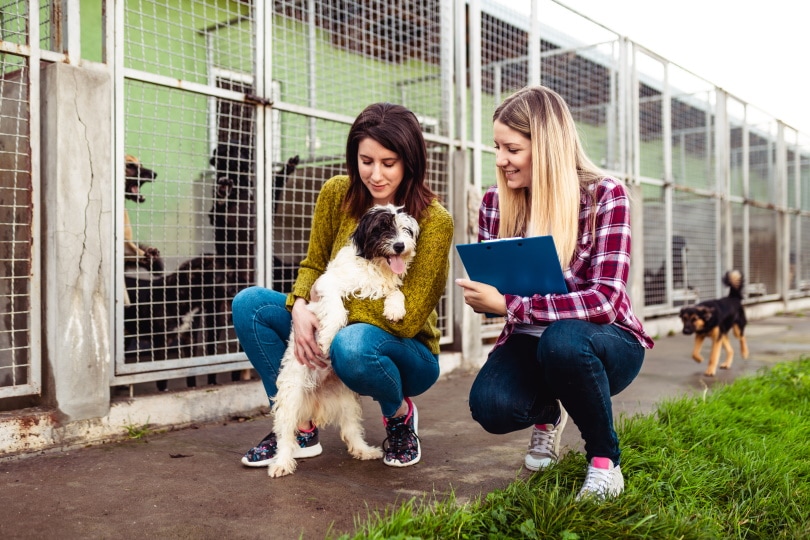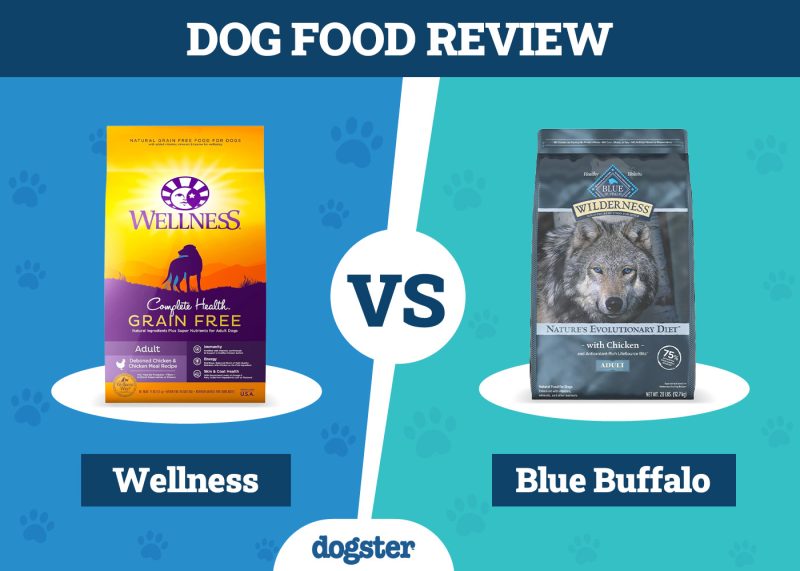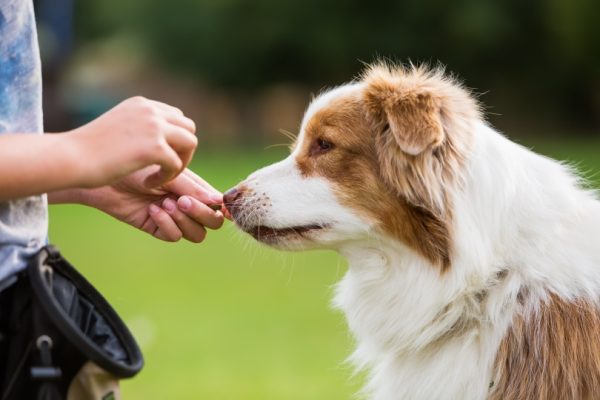We all know the love, loyalty, and companionship that dogs can provide, even if we haven’t experienced it for ourselves. Over thousands of years, dogs and humans have come to depend on each other, and we have even molded these creatures to better fit our lives and needs, further strengthening that bond.
Sometimes, through no fault of their own, a dog will find itself in need of a temporary home until a permanent place can be found, and this is where foster care becomes an essential part of animal rescue and rehabilitation. There are a number of reasons that dogs need foster homes, from health or behavioral issues, to overcrowding of animal shelters, or even legal issues.
These dogs may have specific needs or requirements, and fostering a dog should not be viewed as a “trial” for adoption. Many animal shelters and rescue organizations come to depend on experienced foster carers to help rehabilitate dogs with health or behavioral problems to prepare them for their forever homes, so being a foster carer can be a challenging but very rewarding venture. That being said, there are plenty of “foster fails” out there, where temporary placements have become permanent homes!
In this article, we will explore the whys and hows of fostering a dog, with some expert advice on how to become a canine foster parent and whether fostering is right for you.

Is Fostering Right for Me?
There are a number of reasons why people choose to foster rather than adopt. They may not be able to make a long-term commitment to a pet. Instead, they may specifically wish to help pets in need of a transitional home, or they may be taking the pet in on a foster basis until it can be officially released for adoption.
Although fostering may sometimes lead to adoption, it should always be viewed as a temporary arrangement. Difficult though it may be, you should be prepared for when the foster period is over. With that said, an important part of fostering is providing a loving home, so it’s not always easy to say goodbye! If you think that you might be able to take on this rewarding role, read ahead for some expert tips.
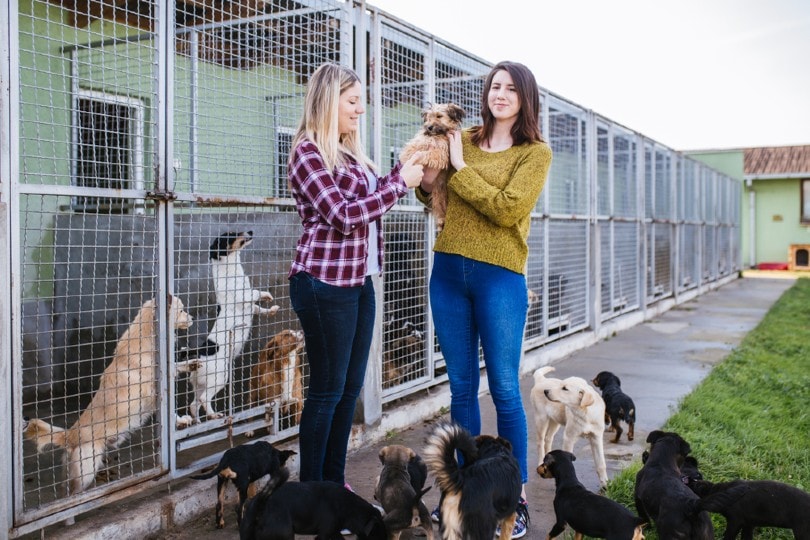

The 5 Recommendations on How to Foster a Dog
1. How to Become a Doggy Foster Parent
You will probably be aware of some animal shelters or rescue organizations in your area, and a quick search of Facebook may reveal some smaller local organizations. If you are looking to foster a dog, it is best to work with a reputable rescue organization;1 one that:
- Is registered with their local authority, city, county, or state as a non-profit entity
- Demonstrates knowledge and understanding of dog behavior and health and has provisions in place for when dogs in their care require veterinary attention
- Ensures dogs are kept up to date with vaccinations and neuters/spays dogs in their care
- Communicates clearly about their expectations of you as a foster parent and provides plenty of information and support.
All good rescue groups will require you to complete an application to assess your ability to become a foster parent, and many will perform a home check to make sure your home is suitable for taking in a dog. You may think that the high demand for foster carers would mean that it will be an easy process, but rescue organizations need to be super careful to ensure that they have the right people, in the right environment, with which to place dogs in need.
If you don’t have a lot of experience looking after a dog, this doesn’t necessarily rule you out of fostering, but it is important to be honest and clear about what you are comfortable with so that you are matched to the right dog. There will usually be some form of induction or training for new foster parents to make sure you have everything you will need to take care of a dog, and this is an opportunity to ask any questions you may have.

2. Preparing Your Home for Fostering
This process will be very similar whether you are fostering, adopting, or bringing home a puppy (and has a few things in common with bringing home a new baby!). You will need to have a secure yard, with the fence in good condition with no gaps or holes. When fostering a dog, it is generally expected that he or she will live and sleep indoors as part of the family, but secure access to the outdoors is important, and there should be areas for them to shelter from rain or sun.
Some dogs will feel nervous and anxious, especially if they have come from a situation of abuse or neglect, and it is important that they have a place where they feel safe and secure. Using a dog crate can be a very simple way to provide your foster dog with a secure “bedroom”, as well as allow you to leave the house without worrying about them injuring themselves (or your furniture!) until they have settled in.
If you are fostering a dog that has had a negative experience with being caged or crated, then this will obviously not be appropriate for them, so choose a quiet corner or room that can be theirs. It is important that the dog be given an area (crate, room, or bed) that they can go to if they need space, and it’s vital that everyone in the house (particularly children) know to leave them alone if they are in their safe space. This will reduce anxiety and help to build trust.
Set up their bed in the crate (or small room) and make it a soft and cozy environment. Don’t invest a huge amount of money into beds and blankets until you work out if your new house guest is a chewer! You can often find calming pheromone sprays or diffusers that can help with the settling-in process too.
Most animal rescues will cover or contribute to the costs of veterinary treatment, but buying food will be your responsibility. Find out what they are currently being fed, and whether they have any specific dietary requirements. Ensure you have the same food for when they come home, and if you plan to change to a different food, do so gradually over a period of a week to reduce the chances of upset tummies.
3. Bringing Your Foster Dog Home
Before you bring them home, do a once over of the house, looking for things that could cause injury or fright, and if needed, do some “baby-proofing” of plug sockets, stairs, and breakables.
This is often a very exciting time, but try to play it cool. Your foster dog will likely be feeling stressed or anxious or overwhelmed. Start by showing them the yard, so they are familiar with the outside area and know there will be somewhere they can toilet. If there are places in the house that they will not be allowed, or that you don’t want them going into just yet, make sure those doors are shut before you bring the dog inside so that you can allow them to wander and explore at their own pace.

4. Introducing Them to Other Pets
If you have dogs at home, it is common for them to have had an introduction to the foster dog as part of the induction process, but bringing the new guest into the home can be quite different. Dogs interact much better when they are not on a lead, so if it is safe, try to introduce them in the yard, where neither dog will feel trapped.
It is common for dogs to establish a hierarchy, and this may not always go the way you expect. It is not unusual for the new dog or the younger dog or (very commonly) the smaller dog to take charge. There may be a bit of friction at first, but it often becomes clear quite quickly who the “top dog” is going to be, and it is super important that we respect that. It will often go against our instincts, but once established, it is important that we respect the hierarchy by greeting, feeding, and petting the “top dog” first. It is very natural for us to feel sorry for the underdog and give them preferential treatment out of sympathy, but this will actually make matters worse by causing confusion and will almost always lead to fights.
Introducing your foster dog to cats in the house can be a bit tricky, especially if they have not lived with them before. For most cats, their instinct will be to run away, and the dog will want to chase. Ensure that your cat has somewhere safe it can get to that the dog cannot follow. Tall cat trees work well, and you might even consider installing a cat door in an inside door so that there are places your cat can go that the dog can’t follow (the exception being tiny dogs, of course!). You may be advised to keep cats and dogs separated physically for 1–2 weeks, but this can actually lead to tension building, as both the cat and dog will be very aware of each other’s presence but unable to communicate or establish boundaries. Provided your cat has plenty of space and height to escape to if needed, it is best to allow them to do things in their own time.
In the majority of cases, the animals in the house will settle into their own routines and relationships if left to their own devices, and apart from making sure that everyone is safe, it is often better to let them settle at their own pace.
5. Foster Dogs & Children
When bringing a foster dog into a family, here are a few commandments to follow and some helpful tips:
- Children must NEVER disturb a foster dog when they are in their “safe space” (like their bed or crate). This must be an area where the dog knows they will not be disturbed.
- Children must NEVER be allowed to take food or toys away from the dog until this has become an established safe practice. One of the roles of a foster carer may be to teach the dog that food and toys can be taken and returned without fear or aggression, but this training must never be undertaken by children.
- It is a good idea, however, to have children be part of feeding time. It helps establish them as providers rather than pack members to the dog.
- Ensure that children are very aware that fostering means that, in all likelihood, this dog will eventually leave for a forever home. This will be difficult, but it must be seen as a sign of their success; that they have helped a dog transition from being unsuitable for adoption to being ready for their new home.
Most rescue groups will not foster dogs to homes with small children, both for the safety of the children and the dog. Dogs needing foster care will often have an unknown history, so it is simply not worth taking any chances with littlies.
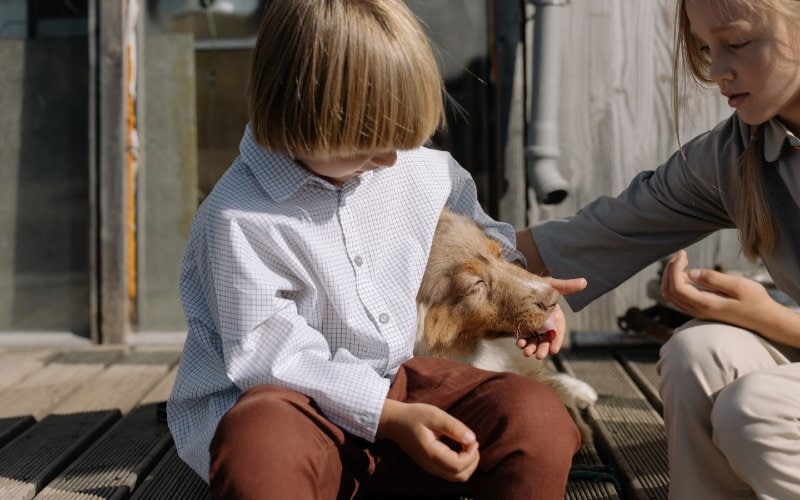

Summing Up
Fostering can be a very rewarding way for people to help dogs in need become ready for adoption. It can also be a way for people to share their home with a dog without a long-term commitment to adopting, while helping prepare the pup for its forever home. Fostering may sometimes lead to the permanent adoption of that dog, but fosterers must always be aware that this is a temporary arrangement and not a trial for owning a dog.
Most reputable rescue organizations and animal shelters will have procedures in place to ensure that you are prepared and supported for fostering a dog, but not all homes will be suitable for fostering. There are a number of ways to help prepare for bringing home a foster dog, with the provision of a calm, secure environment at the top of the list. Introducing a foster dog to your own dogs and cats can be unpredictable, but it is important to give them the space and time to establish their own boundaries and relationships.
Fostering is not for everyone, but if you think you have what it takes to provide love, training, guidance, and security for a dog in need of a foster home, this can be an extremely rewarding thing to do.
See also:
- Can You Rent a Puppy? Pros, Cons & Alternatives
- I Adopted a Dog and Now I Regret It: What You Should Do (Vet Answer)
Featured Image Credit: hedgehog94, Shutterstock


